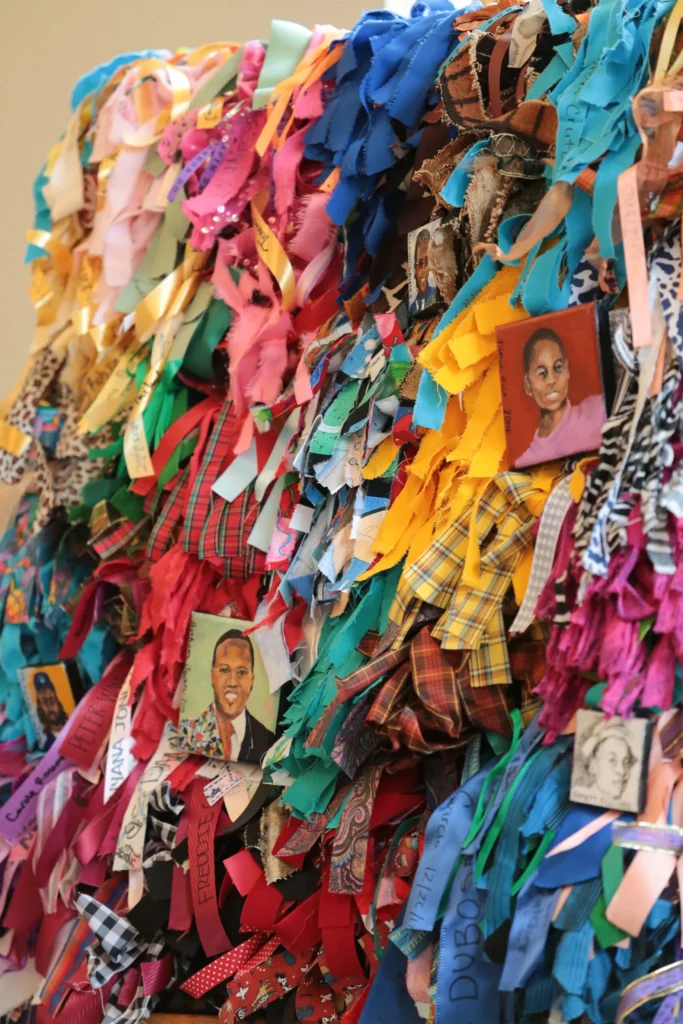By Dr. Renady Hightower, Associate Professor, Health Services Administration
COVID-19 changed the world in 2020. The effects of which reached into the lives of each of us in many ways. COVID-19 research documents the pain and anguish felt across the spectrum of human existence. Unfortunately, the ultimate sacrifice has been the numbers of lives lost during the pandemic. As we continue to live with COVID-19, mental health continues to be one of the most important aspects of health, especially as it relates to our well-being and our ability to function during this global pandemic.
During the initial phase of the global pandemic in 2020, the focus and concern in academia was pointed towards teachers and students. Two important questions emerged: 1) How do we provide support to each of our students, no matter the class modality, and 2) What services are needed to support the mental health and well-being of students? Both were difficult questions to answer, and in order to address such concerns, many of us had to rethink how to meet challenges in the classroom. This reflection often led to the development of innovative assignments which we can continue to implement in our courses.
In what follows, I explore how I created and implemented an interactive assignment that allowed students space to share and process their feelings about current events in addition the pandemic — namely, racial injustices occurring in the United States — during fall 2020. The positive outcomes of this assignment suggest creating similar opportunities for engagement in future courses.
 Photo courtesy of Dr. Renady Hightower. Detroit-Rivertown. Image taken by author on June 10, 2021
Photo courtesy of Dr. Renady Hightower. Detroit-Rivertown. Image taken by author on June 10, 2021
Starting Point
As I reflected over the scope and impact of the pandemic on higher education in 2020, I thought of the many issues and problems which surfaced that reflected a gap in the available resources for those in need of mental health supportive services. For example, COVID-19 research has shown an increase in substance use, 1,2 alcohol consumption,3 and domestic violence.4, 5 More importantly, in the context of education, research demonstrated that students were suffering, many times, in silence.6
How were we to identify, assist and provide the much-needed supportive services to those students in need? How could we continue to address such issues inside and outside of the classroom? One way I have offered support to students is via engagement activities and assignments that let students know that they can share their thoughts and feedback with me.
At the start of the Fall 2020 term, our institution welcomed the coming school year with “Celebrate Spirit,” a longstanding tradition and campus celebration which included an interactive exhibit called the “Healing Wall” curated and led by Detroit artist Carole Morriseau. The purpose of the interactive exhibit was to post ribbons in support of those who had suffered at the hands of the police or suffered some form of social injustice, with the intent of recognizing their pain and suffering.
I quickly recognized the significance of this event as it related to students. This event provided an opportunity to address the communication gap (indicated in the cited research above) by presenting students with an outlet to express those issues, feelings, experiences, doubts, fears, emotions that may have been bottled up, or held back during this difficult, challenging, and uncertain time in our world.
Given the weight of COVID-19 and its impact on the world and how social isolation generated an increase in mental health issues and needs, I incorporated the “Healing Wall” into the classroom by offering students extra credit if they decided to participate in the interactive exhibit. This decision was made to not only encourage students to participate, but also to be immersed within the University community during a trying and tumultuous time.
Students were asked to participate in the exhibit by identifying someone they knew who had suffered at the hands of the police, or some form of social injustice. They were asked to write a short paragraph about the person and the incident and post it to blackboard site. They were not asked to give real name of the person, using the first name or initials was sufficient. If the student did not know anyone personally, they were asked to offer up the name of someone they heard about in recent months. Once I received their assignments, I forwarded it over to Campus Ministry. The names of the individuals were placed on ribbons and the ribbons subsequently placed on the interactive exhibit.
This interactive exhibit in conjunction with our Celebrate Spirit was both timely and so very needed given the social and emotional climate of our nation at that time. This extra credit assignment gave students an opportunity to take a moment to reflect and offer up the name of those whom they knew and or loved that had experienced this form of suffering and needed healing.
It is no secret that mental health and any associations with seeking and receiving health services is still frowned upon and continues to incur stigma within our American culture and society.7 Even though mental health has been recognized and included in World Health Organization definition of health, many people still are reluctant to reveal and or express a need for such services. The social isolation of COVID-19 produced a heavy weight on everyone especially as we watched the events of George Floyd unfold. Who can we talk to? Who is there to listen? Where can I unburden myself from these chains of emotions, feelings, thoughts, fear, and uncertainties?
 The Healing Wall.
The Healing Wall.
Student responses and participation were surprising. I taught several classes during that fall term and the majority of the students decided to participate and thus, deepen their connections to the University community: they were immersed within Their university community during a difficult time. The responses from students were enlightening and revealed so much that they were carrying, feeling and thinking that was hidden. Below are a few student responses that made their way to the Healing Wall installation:
- “As someone who has shared in those same experiences, I know how hard it is to see past them … I refuse to give up though”
- “(t)he police used his ethnicity and religion to practice social injustice …today as I stand there with nothing to offer but prayers and wishing of healing to his soul ”
- “(a) best friend wrongfully accused of a crime they did not commit, unable to afford a lawyer.”
- “we are all part of the human race and should all be given the same rights, no matter.”
I was pleased in how each student participant opened up and took this opportunity to “heal” through the sharing of their “testimony,” including, but not limited to how they felt, thought, and looked to the future. Participating in “Healing Wall” on campus provided the outlet to express how they were feeling; what they were feeling; along with their thought pertaining to the situation they chose to share. What occurred was a miracle, in sharing those stories of suffering, students received healing for themselves within.
After the completion of the semester (Fall 2020), I took time to reflect and identify outcomes associated with this exercise. This was an important evaluation and follow through because I wanted to use these findings to help with future courses. Based on these outcomes, my goal was to establish a foundation to build upon for creating additional assignments which can help students to be present through relevant current events.
Outcomes:
After the assignment was completed, several outcomes were identified. First, students were able to connect course content to (a) current issues, and/or events relevant today. In other words, the exercise presented a way for students to be present in the context of a course topic through a current event. Second, students engaged in a critical thinking exercise through reflection with regards to the “self” and “others”, which is critically important in healthcare. The ability to see “self” and “others” is crucial for those who pursue careers as health providers or administrators. Third, the exercise reflected back to the Detroit Mercy Jesuit and Sisters of Mercy traditions in how it permitted students to challenge the status quo with regards to racial injustice by voicing their compassion for those who are victims of such abuse and experiences. For those who did not personally have a connection with someone who was a victim, they expressed an awareness of seeing the social injustices, around them particularly towards African Americans and expressed a call for accountability. A final outcome of this exercise, I believe, reflects how a safe space was created for students to demonstrate and express compassion in a critical moment in our history.
As I look back on that time, I can readily see that there was a need, and the solution came in an unconventional way. COVID-19 not only taught us how to improvise; but it necessitated that we change our way and approach to problem solving. More importantly, it taught us that mental health cannot continue to be undermined and attributed the stigma of being imperfect. Engaging in those reflective assignments presented an avenue for students to receive within themselves some relief to support their mental health and well-being.
References
- Avena, N., Simkus, J., Lewandowski, A., Gold, M., & Potenza, M. (2021). Substance Use Disorders and Behavioral Addictions During the COVID-19 Pandemic and COVID-19 Related Restrictions. Frontiers in Psychiatry, 12:1-7.
- Czeisler, M., Lane, R., Petrosky, E., & Wiley, J. R. (2020). Mental Health, Substance Use, and Suicidal Ideation During the COVID-19 Pandemic – United States, June 24-30, 2020. MMWR Morbidity and Mortality Weekly Report, 69(32):1049-1057.
- Grossman, E., Benjamin-Neelon, S., & Sonnenschein, S. (2020). Alcohol Consumption During the COVID-19 Pandemic: A Cross-Sectional Survey of U.S. Adults. International Journal of Environmental Research and Public Health, 17(24):9189
- Bradbury-Jones, C., Isham, L. (2020). The Pandemic Paradox: The Consequences of COVID-19 on Domestic Violence. Journal of Clinical Nursing, 29(13-14):2047-2049.
- Usher, K., Bhullar, N., Durkin, J., Gyamfi, N., & Jackson, D. (2020). Family Violence and COVID-19: Increased Vulnerability and Reduced Options for Support. International Journal of Mental Health Nursing, 29(4):549-552.
- Browning, M., Larson, L., Sharaievska, I. R., McAnirlin, O., Mullenbach, L., & Alvarez, H. (2021). Psychological Impacts from COVID-19 Among University Students: Risk Factors Across Seven States in the United States. PloS one, 16(1), e0245327.
- Golberstein, E., Eisenberg, D., & Gollust, S. (2008). Perceived Stigma and Mental Health Care Seeking. Psychiatric Services, 59(4):392-399.